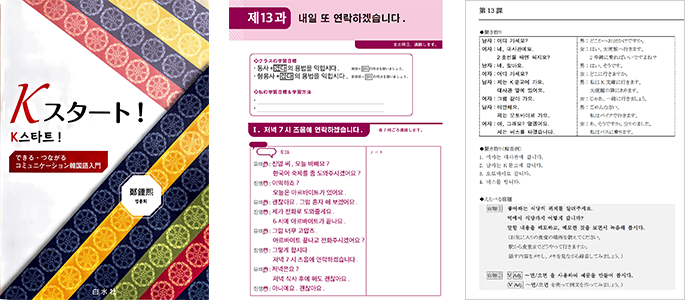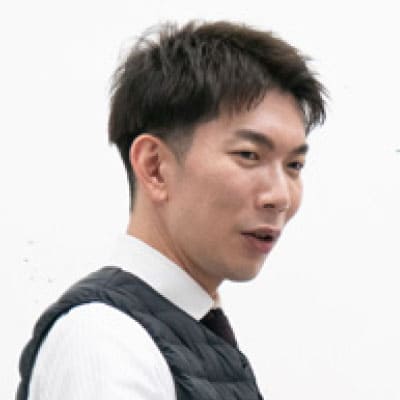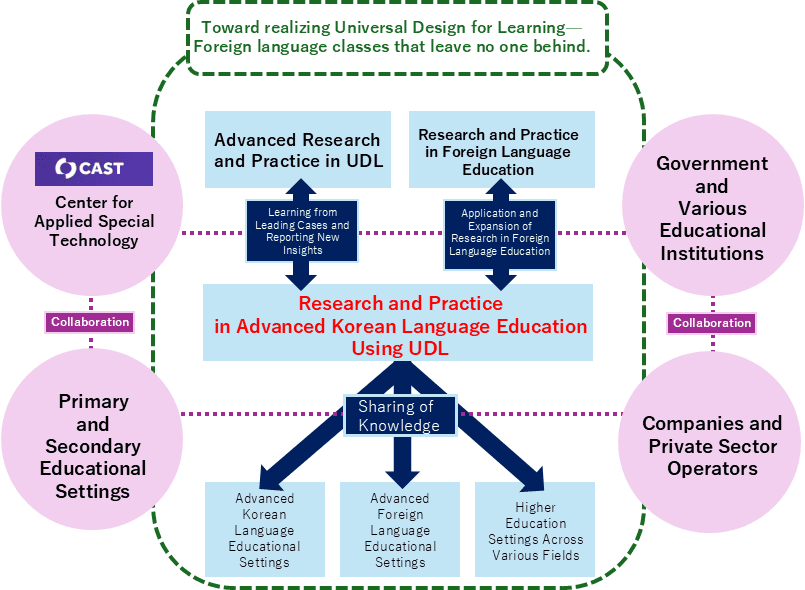Using UDL to Realize Foreign Language Education that Leaves No One Behind
Categories:
Overview
Applying Universal Design for Learning (UDL) to language education to maximize the potential of learners with diverse attributes
Universal Design for Learning (UDL) is an educational framework for providing an effective learning environment for all learners. It is structured according to three main principles: why we learn (motivation), what we learn (understanding), and how we learn (action and expression), with the goal of "leaving no learner behind.” To date, practical research on UDL has been conducted mainly in the fields of special needs education and primary and secondary education, but there are very few cases of it being practiced in higher education, especially in the field of language education.
However, language education in today's higher education institutions is becoming increasingly diverse in terms of learners’ attributes such as native languages, cultural backgrounds, and levels of learning achievement, making it difficult to fully meet the needs of individual learners and maximize learning effectiveness with conventional teaching methods. This trend is expected to further accelerate going forward due to factors such as the increase in the number of international students and the diversification of entrance examinations.
In this research, I am attempting to apply UDL to Korean language education at a university to develop and conduct practical research on teaching methods that respond to the attributes of a diverse array of learners. By putting this into practice on a multilingual and multicultural campus like APU, an environment rarely seen at other Japanese universities, my goal is to realize foreign language education that maximizes the potential of each and every learner.
I also envision using the results of this research to improve the learning environment and curriculum for many learners, not only at APU, but extending to the field of Korean language education, and in the future, to the field of foreign language education at large.

Reference: Regarding Universal Design for Learning (Center for Applied Special Technology, 2025)
By exploring issues based on the three main principles of Universal Design for Learning (UDL), better foreign language learning can be achieved.
Novelty/Originality
Pioneering practical research into the application of UDL to language education in a higher educational institution
The biggest feature of this research is the application of UDL, which has been used mainly in elementary and secondary education to date, to language education in higher education, and in particular, to foreign language education. Moreover, the first step is to implement UDL in a Korean language classroom, an educational setting where UDL has never been introduced before.
In recent years, there is a growing awareness in junior high and high school foreign language education that, rather than using a conventional one-size-fits-all curriculum and mode of instruction, education needs to be tailored to the attributes of the learners, which has led to UDL-based education being put into practice. However, the need for UDL-based education in universities and other institutions of higher education has not yet been fully recognized. Underlying this is a common misconception that UDL only applies to learners with learning disabilities (LD) as well as the fact that, in institutions of higher education, curricula and the management of learning outcomes are often left to the discretion of individual faculty members.
However, the attributes of learners in institutions of higher education are diversifying, ranging from native language and cultural background to language proficiency at the time of enrollment. For example, in the Korean language class at APU, which is taught by the principal investigator of this study, the international students who make up more than half of the 25-student capacity have 17 different native languages and share no common meta-language. In this kind of environment, the principal investigator began introducing and implementing UDL, the topic of this research, through a process of trial and error in order to increase the effectiveness of students' foreign language learning.
Based on the philosophy of UDL that the problem with insufficient academic achievement is not the learner but the curriculum, this research seeks to fundamentally rethink language education in a conventional higher education setting to provide fair and equal opportunities for all learners.
At first glance, APU's Korean language classes appear to be special. However, it can also be said that this is the future of Japanese higher education and, by extension, of Japanese society, which will become increasingly more globalized and diversified. This research, conducted in this kind of environment, should serve as an important model case for language education going forward.

K-Start! Dekiru & Tsunagaru: Introductory Korean for Communication (Hakusuisha). A book written by principal investigator JUNG Jonghee in 2025. This is the first Korean language textbook whose structure is based on UDL. The principal investigator plans to teach classes using this textbook and continue conducting practical research.
Related Research
A case study of inclusive class development based on UDL concept: Improving the 1st year seminar and mandatory language subjects at Ritsumeikan Asia Pacific University
Principal Investigator

Ritsumeikan Asia Pacific University
You can view and print a summary of this page's contents in a single PDF page here.







I was born and raised in Korea, but when I was in high school, my love of Japanese culture led me to study the Japanese language and study abroad in Japan as a university student. In the process of learning Japanese, I realized that learning a new language means more than just acquiring a communication tool. By learning a language, I encountered a new me and a new world. I wanted as many students as possible to experience that same joy, so I chose to become a Korean language educator in Japan.
I feel that language education in its current state is still inadequate to fully realize the potential of each individual learner. The UDL approach could be an important solution to this issue. By putting this approach into practice in a diverse environment like APU, I aim to realize language education that allows all learners to learn in ways that suit their respective needs and to encounter new worlds.
Ritsumeikan Asia Pacific University Faculty Information
researchmap